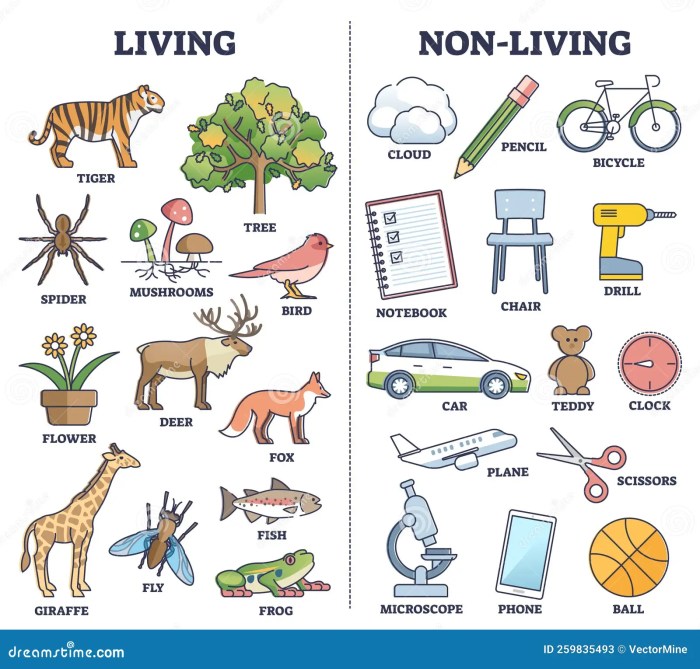How to be happy? This isn’t just a question, it’s a journey. We all crave happiness, that elusive feeling of contentment and fulfillment. This guide delves into the multifaceted nature of happiness, exploring its philosophical underpinnings, psychological factors, and the practical steps you can take to cultivate it. From understanding the difference between fleeting pleasure and lasting well-being to navigating the challenges and obstacles that can stand in your way, this exploration offers a roadmap to a happier life.
We’ll unpack the core elements that contribute to happiness, including the vital roles of gratitude, optimism, and strong social connections. We’ll also discuss the importance of self-care, resilience, and understanding how external factors influence our inner state. Prepare to embark on a transformative journey to discover your path to lasting joy.
Defining Happiness
Happiness, a deeply personal and multifaceted experience, is often sought but rarely fully understood. It’s not simply a fleeting feeling, but a complex interplay of emotions, thoughts, and actions. This exploration delves into the diverse perspectives on happiness, differentiating it from pleasure, and examining how personal values shape our understanding of this elusive state.Defining happiness involves looking beyond simple pleasure or satisfaction.
It encompasses a deeper sense of well-being, fulfillment, and purpose, influenced by a myriad of factors, including individual values, cultural norms, and life experiences. We’ll examine how these various aspects contribute to the overall understanding of happiness.
Philosophical Perspectives on Happiness
Philosophers have pondered the nature of happiness for centuries. Different schools of thought offer varying interpretations. Ancient Greek philosophers, like Aristotle, emphasized eudaimonia, a state of flourishing and living a virtuous life. This concept suggests that happiness isn’t a fleeting emotion, but a result of living a life aligned with one’s potential and moral principles. Stoicism, on the other hand, highlights the importance of accepting what is beyond our control and focusing on inner peace, which contributes to a sense of happiness independent of external circumstances.
These differing perspectives demonstrate the multifaceted nature of happiness, recognizing that it’s not a singular experience but rather a complex concept influenced by diverse philosophical viewpoints.
Psychological Understandings of Happiness
Psychology offers a more empirical approach to understanding happiness. Research suggests that happiness is associated with positive emotions, life satisfaction, and meaning in life. Theories like the PERMA model (Positive Emotion, Engagement, Relationships, Meaning, Accomplishment) suggest that cultivating these five elements contributes to a more enduring sense of happiness. Furthermore, research on happiness emphasizes the importance of gratitude, resilience, and mindfulness practices in fostering a positive emotional state.
Cultural Variations in Happiness
Happiness isn’t a universal experience. Cultural norms and values significantly influence how individuals perceive and express happiness. In collectivist cultures, happiness often stems from social harmony and fulfilling familial obligations. In individualistic cultures, personal achievement and independence might be seen as crucial components of happiness. Different cultures also employ diverse expressions of happiness, from public displays of joy to more reserved or introspective expressions.
Understanding these cultural variations is essential for appreciating the diverse ways in which people experience happiness.
Happiness vs. Pleasure
While happiness and pleasure are often conflated, they represent distinct experiences. Pleasure is a more immediate, sensory experience, often tied to specific stimuli. Happiness, on the other hand, is a more enduring state of well-being, encompassing a broader range of factors beyond immediate gratification. For example, a delicious meal can provide pleasure, but cultivating a sense of gratitude and appreciation for the food, the experience of sharing it with loved ones, and the feeling of contentment afterward can contribute to a deeper sense of happiness.
Happiness is often connected to a sense of purpose and meaning, while pleasure is more focused on the immediate sensory experience.
Role of Personal Values and Beliefs
Individual values and beliefs play a crucial role in shaping one’s understanding of happiness. For instance, someone who values community and helping others might find happiness in acts of service and social connection. Someone who values personal growth and self-discovery might find happiness in pursuing knowledge and challenging themselves. These personal values act as a compass, guiding individuals towards activities and experiences that resonate with their core beliefs, contributing to a more meaningful and fulfilling sense of happiness.
Examples of Cultural Perceptions
Different cultures express happiness in various ways. In some cultures, laughter and boisterous celebrations are common expressions of joy. In others, quiet contemplation and introspection might be valued as ways of experiencing happiness. For example, in many East Asian cultures, maintaining harmony within a social group and contributing to the collective well-being is often viewed as a significant source of happiness.
Conversely, in many Western cultures, personal achievement and independence are frequently associated with feelings of happiness. These varied expressions highlight the diverse ways in which happiness is understood and experienced across different cultures.
Factors Contributing to Happiness
Happiness is a multifaceted concept, influenced by a complex interplay of psychological, social, and physical factors. While the definition of happiness may vary from person to person, understanding these contributing elements can offer valuable insights into cultivating a more fulfilling life. This exploration delves into the key components that contribute to overall well-being and happiness.The pursuit of happiness is a universal human desire, yet its nature remains elusive.
It’s not simply a fleeting emotion but a state of being that stems from various interconnected aspects of life. Recognizing these contributing factors is crucial in developing strategies to cultivate happiness.
Psychological Factors Influencing Happiness
Psychological factors play a significant role in shaping our experience of happiness. Positive psychological traits, such as gratitude, optimism, and resilience, contribute substantially to overall well-being. These traits are not inherent but can be cultivated and strengthened through conscious effort.
- Gratitude: Acknowledging and appreciating the good things in life fosters a sense of contentment and joy. Practicing gratitude through journaling, expressing thanks to others, or simply noticing positive aspects of daily life can significantly enhance happiness.
- Optimism: Maintaining a positive outlook and expecting favorable outcomes, even in challenging situations, can buffer against stress and promote a sense of hope and well-being. Actively focusing on positive aspects and reframing negative thoughts can cultivate optimism.
- Resilience: The ability to bounce back from adversity and adapt to life’s challenges is a crucial aspect of happiness. Developing coping mechanisms, seeking support from others, and focusing on personal growth can strengthen resilience.
Impact of Social Connections on Happiness
Strong social connections are vital for happiness. Humans are inherently social beings, and meaningful relationships provide support, belonging, and a sense of purpose. Quality interactions and a strong support system significantly contribute to overall well-being.
- Meaningful Relationships: Nurturing close bonds with family, friends, and partners fosters a sense of belonging and support, which is essential for happiness. Investing time and effort in these relationships is crucial.
- Social Support: Having a strong support network can act as a buffer against stress and adversity. During challenging times, social support provides comfort, encouragement, and practical assistance, promoting a sense of security and well-being.
Role of Physical Health and Well-being in Happiness
Physical health and well-being are intricately linked to happiness. Maintaining a healthy lifestyle, including proper nutrition, regular exercise, and adequate sleep, is essential for overall well-being.
- Nutrition: A balanced diet provides the necessary nutrients for optimal physical and mental health. Fueling the body with healthy foods can positively impact energy levels, mood, and overall well-being.
- Exercise: Regular physical activity releases endorphins, which have mood-boosting effects. Physical exercise can reduce stress, improve sleep quality, and contribute to a sense of accomplishment.
- Sleep: Adequate sleep is essential for cognitive function, emotional regulation, and overall well-being. Prioritizing sufficient sleep promotes mental clarity, emotional stability, and physical restoration.
Practical Strategies for Improving Factors
Implementing practical strategies can help individuals cultivate the psychological, social, and physical factors that contribute to happiness.
- Gratitude Practice: Keep a gratitude journal, express appreciation to others, and actively look for positive aspects in daily life.
- Optimism Cultivation: Challenge negative thoughts, focus on positive outcomes, and practice positive self-talk.
- Resilience Building: Develop coping mechanisms for stress, seek support from others, and focus on personal growth.
- Social Connection Enhancement: Invest time in meaningful relationships, participate in social activities, and nurture connections with loved ones.
- Healthy Lifestyle Adoption: Eat nutritious foods, engage in regular exercise, and prioritize adequate sleep.
Comparing Impact of Life Experiences on Happiness
| Life Experience | Potential Impact on Happiness | Example |
|---|---|---|
| Career Success | Can contribute to a sense of accomplishment and purpose, but not always directly correlated with happiness. | A promotion can bring satisfaction, but happiness depends on other factors. |
| Financial Security | Provides a foundation for happiness, reducing stress and anxiety. | Financial stability reduces worries about basic needs. |
| Significant Relationship | Strong relationships can greatly enhance happiness, but the quality of the relationship is key. | A supportive and loving partnership positively impacts happiness. |
| Personal Growth | Developing skills and pursuing passions contributes to a sense of purpose and fulfillment. | Learning a new skill or pursuing a hobby brings satisfaction. |
| Adversity | Can lead to personal growth and resilience, but also temporary setbacks. | Overcoming a challenge fosters resilience and a stronger sense of self. |
Practices for Cultivating Happiness: How To Be Happy
Cultivating happiness is not a destination but a journey. It’s about actively engaging in practices that nurture well-being and resilience. These practices are not quick fixes, but rather, consistent efforts that, over time, can significantly improve our overall quality of life. It’s about building habits and incorporating strategies into daily routines that support happiness.These practices are more than just feel-good activities; they are tools for building a stronger foundation for navigating life’s inevitable challenges.
By understanding and applying these techniques, you can equip yourself with the skills to not only manage adversity but also to flourish.
Finding happiness is a journey, not a destination. One way to enhance your overall well-being is by exploring ways to earn some easy money for your extra funds, like checking out earning easy money your extra funds. Having a little extra cash can definitely reduce stress and open up opportunities, which in turn can contribute to a more positive outlook.
Ultimately, focusing on activities that bring you joy and finding creative ways to manage your finances are key to a happier life.
Cultivating Gratitude
Gratitude is a powerful tool for fostering happiness. Acknowledging and appreciating the positive aspects of our lives, no matter how small, can shift our focus and perspective. Regularly practicing gratitude can lead to increased feelings of contentment and overall well-being.
- Identify and Reflect: Take time each day, ideally in the morning or evening, to reflect on the things you are grateful for. This could be anything from a delicious meal to a supportive friend to a sunny day. Write them down in a journal, or simply take a few moments to mentally acknowledge them.
- Express Gratitude: Expressing gratitude to others is just as beneficial as expressing gratitude for yourself. Thank someone for their help, compliment a colleague, or send a heartfelt message to a loved one. This fosters positive connections and reinforces feelings of appreciation.
- Practice Gratitude Meditation: Focus on the sensations of gratitude. Imagine the feelings of appreciation and joy. This helps to anchor gratitude in the present moment.
Practicing Mindfulness and Self-Compassion
Mindfulness involves paying attention to the present moment without judgment. Self-compassion involves treating yourself with the same kindness and understanding you would offer a friend facing a challenge. Combining these two practices can significantly reduce stress and increase emotional well-being.
- Mindful Breathing Exercises: Focus on your breath. Notice the sensation of the air entering and leaving your body. This simple practice can anchor you in the present moment, reducing anxiety and promoting a sense of calm.
- Self-Compassion Practices: Acknowledge that imperfection is part of being human. When you make a mistake or experience setbacks, treat yourself with the same kindness and understanding you would offer a friend. Avoid harsh self-criticism and instead focus on self-acceptance.
- Mindful Activities: Engage in activities that require focused attention, such as gardening, listening to music, or enjoying a meal without distractions. These practices help cultivate awareness and reduce rumination on negative thoughts.
Building Resilience and Overcoming Adversity
Resilience is the ability to adapt and thrive in the face of challenges. Building resilience involves developing coping mechanisms to manage stress, setbacks, and difficult situations. This often involves a shift in perspective and approach to problems.
- Develop a Support System: Build strong relationships with family, friends, and colleagues. These relationships provide a network of support during difficult times.
- Develop Problem-Solving Skills: Identify the source of the challenge, and brainstorm possible solutions. This approach can empower you to take control of the situation and feel more in control.
- Learn from Setbacks: Every setback provides an opportunity for growth and learning. Reflect on what happened, identify what you could have done differently, and use that knowledge to navigate future challenges.
Nurturing Positive Relationships and Building Social Support Networks
Strong social connections are vital for happiness. Positive relationships provide a sense of belonging, support, and encouragement. Investing in these connections can lead to a more fulfilling and meaningful life.
- Active Listening: Listen attentively to others, without interrupting or formulating your response. Pay attention to their words and nonverbal cues. This fosters deeper understanding and connection.
- Quality Time: Spend quality time with loved ones. This could involve engaging in activities together, having meaningful conversations, or simply being present for each other.
- Seeking Support: Don’t hesitate to reach out to others when you need support. Talking to a friend, family member, or therapist can make a significant difference.
Correlation Between Practices and Happiness Levels
| Practice | Description | Potential Impact on Happiness Levels |
|---|---|---|
| Gratitude | Appreciating positive aspects of life | Increased contentment, positive emotions |
| Mindfulness | Paying attention to present moment | Reduced stress, increased self-awareness |
| Self-Compassion | Treating oneself with kindness | Increased self-acceptance, reduced self-criticism |
| Resilience | Adapting and thriving in face of challenges | Improved coping mechanisms, increased emotional strength |
| Positive Relationships | Strong social connections | Increased sense of belonging, social support |
Overcoming Obstacles to Happiness

Navigating life’s journey often involves encountering obstacles that can hinder our pursuit of happiness. These obstacles, while sometimes subtle, can significantly impact our overall well-being. Understanding these challenges and developing strategies to overcome them is crucial for fostering lasting happiness. This section will delve into common obstacles, practical techniques for overcoming them, and strategies for managing associated stress and anxiety.Recognizing and confronting these hurdles is the first step towards cultivating a happier, more fulfilling life.
By actively addressing these issues, we empower ourselves to navigate life’s complexities with resilience and maintain a positive outlook.
Finding happiness isn’t always about chasing the perfect outcome, but more about embracing the journey. It’s about learning to savor the mundane, and appreciating the present moment. A key element to this is understanding how to enjoy what you’re doing, no matter what. Check out this helpful guide on how to enjoy what you are doing no matter what for some practical tips and strategies.
Once you master this, you’ll be well on your way to a happier, more fulfilling life.
Common Happiness-Hindering Patterns
Many individuals experience recurring patterns that impede their happiness. These patterns, often rooted in ingrained beliefs and behaviors, can become deeply entrenched. Identifying these patterns is the first step towards dismantling them.
- Negative self-talk: Frequently engaging in critical self-assessment, self-doubt, and harsh inner dialogue can significantly affect one’s emotional state. It often manifests in the form of negative thoughts, self-criticism, and a tendency to focus on perceived flaws or shortcomings.
- Perfectionism: Striving for flawlessness in all aspects of life can lead to feelings of inadequacy and pressure. This often manifests as an inability to accept imperfections and a relentless pursuit of unattainable standards. It can manifest as self-criticism, procrastination, and difficulty accepting feedback.
- Fear of failure: A deep-seated fear of not meeting expectations or experiencing setbacks can lead to avoidance, procrastination, and anxiety. It frequently manifests as a reluctance to take risks, a tendency to shy away from challenges, and an overall lack of confidence in one’s abilities.
Strategies for Recognizing and Challenging Obstacles
Recognizing these patterns is crucial for effective change. By actively observing our thoughts and behaviors, we can begin to identify recurring patterns that contribute to unhappiness. Developing a mindful approach to our inner dialogue and understanding the roots of these patterns is essential.
- Mindfulness practices: Techniques like meditation and mindful breathing can help individuals become more aware of their thoughts and emotions, enabling them to identify negative patterns and challenge them constructively.
- Cognitive restructuring: This involves identifying and challenging negative thought patterns. By replacing negative thoughts with more realistic and positive ones, individuals can foster a more optimistic outlook and overcome negative self-talk.
- Positive self-affirmations: Repeating positive statements about oneself can help build self-esteem and counter negative self-talk. This can be a powerful tool in fostering a more positive self-image and self-perception.
Managing Stress and Anxiety
Stress and anxiety are common obstacles to happiness. Effective stress management techniques are essential for maintaining emotional well-being. Various strategies can help mitigate the impact of these emotions.
- Relaxation techniques: Techniques like deep breathing exercises, progressive muscle relaxation, and yoga can effectively reduce stress and anxiety levels.
- Time management: Developing effective time management skills can help reduce feelings of overwhelm and stress. Prioritizing tasks, setting realistic goals, and creating schedules can lead to a greater sense of control and reduce stress.
- Physical activity: Regular exercise is a proven stress reliever and mood booster. Physical activity releases endorphins, which have mood-boosting effects.
The Role of Self-Care in Maintaining a Positive Mindset
Self-care is integral to managing stress, anxiety, and other obstacles to happiness. Prioritizing self-care activities, both physical and emotional, helps cultivate a positive mindset and build resilience.
- Prioritizing sleep: Adequate sleep is crucial for emotional regulation and overall well-being. Getting enough sleep allows the body and mind to rest and recharge, promoting a more positive outlook.
- Nourishing the body: Eating a healthy diet and staying hydrated are essential for physical and mental well-being. Fueling the body with nutritious foods provides the necessary energy and nutrients to support a positive mindset.
- Engaging in hobbies and interests: Pursuing hobbies and interests that bring joy and fulfillment can help cultivate a positive outlook and provide a sense of purpose.
Seeking Professional Support
If challenges persist despite implementing these strategies, seeking professional support can be beneficial. Mental health professionals can provide guidance, support, and evidence-based techniques to address underlying issues and develop coping mechanisms.
- Therapists: Therapists offer a safe space to explore personal challenges and develop strategies for managing obstacles to happiness. Therapists provide support and tools to navigate complex emotions and develop healthier coping mechanisms.
- Support groups: Support groups provide a platform for connecting with others facing similar challenges. Sharing experiences and receiving support from others can be invaluable in overcoming obstacles to happiness.
- Online resources: Numerous online resources, including articles, forums, and support groups, can offer valuable information and support for navigating obstacles to happiness.
Common Happiness-Hindering Patterns and Solutions
| Happiness-Hindering Pattern | Solution Strategies |
|---|---|
| Negative Self-Talk | Mindfulness, Cognitive Restructuring, Positive Self-Affirmations |
| Perfectionism | Acceptance of Imperfection, Realistic Goal Setting, Self-Compassion |
| Fear of Failure | Risk-Taking, Gradual Exposure to Challenges, Building Confidence |
Maintaining a Happy Life
Sustaining happiness isn’t a destination but a continuous journey. It’s about cultivating habits and practices that nourish your well-being, resilience, and joy. This involves understanding your needs, embracing change, and nurturing a positive outlook. The key is to view happiness as an active process, not a passive state.Consistent effort and a willingness to adapt are crucial to maintaining a happy life.
This involves understanding that setbacks are inevitable and learning to navigate them effectively. It’s about embracing challenges as opportunities for growth and adjusting your strategies when necessary.
Setting and Pursuing Meaningful Goals
Establishing and pursuing goals that align with your values and aspirations is essential for maintaining a sense of purpose and fulfillment. These goals should be personally meaningful and contribute to a larger sense of self-discovery. Goals should be specific, measurable, achievable, relevant, and time-bound (SMART).
- Clearly define your values. Identify what truly matters to you and how your goals can reflect those values. This ensures that your pursuits align with your inner compass, fostering a stronger sense of purpose.
- Break down large goals into smaller, manageable steps. This approach prevents overwhelm and provides a sense of accomplishment as you achieve milestones along the way.
- Regularly review and adjust your goals as your priorities and circumstances evolve. Life is dynamic, and goals need to adapt to maintain relevance and personal satisfaction.
Self-Acceptance and Self-Love
Self-acceptance and self-love are foundational pillars for maintaining a happy life. Understanding and accepting your strengths and weaknesses without judgment creates a foundation for self-compassion and positive self-regard. Self-love is about treating yourself with the kindness and respect you would offer a cherished friend.
- Practice self-compassion. Treat yourself with the same understanding and kindness you would offer a friend facing a challenge. Acknowledge your imperfections without judgment.
- Celebrate your achievements, no matter how small. Recognize and appreciate your progress, fostering a sense of self-worth and accomplishment.
- Challenge negative self-talk. Identify and reframe negative thoughts, replacing them with positive affirmations and encouraging self-dialogue.
Adapting to Change and Navigating Life Transitions
Life is inherently dynamic, with constant change and transitions. Adaptability is crucial for maintaining a happy life. Embrace change as an opportunity for growth and development, focusing on the lessons and opportunities it presents.
- Develop a growth mindset. View challenges as opportunities to learn and grow, rather than threats to your well-being. Embrace new experiences and perspectives.
- Seek support from others during challenging times. Connect with trusted friends, family, or support groups. Sharing your experiences and seeking guidance can provide strength and perspective.
- Focus on what you can control. Accept that you cannot control everything, and concentrate on the actions you can take to navigate transitions and challenges effectively.
Fostering a Positive Mindset
Cultivating a positive mindset is essential for maintaining happiness. It’s about actively choosing optimism, gratitude, and resilience in the face of adversity.
- Practice gratitude. Regularly acknowledge the positive aspects of your life, from small joys to significant blessings. Expressing gratitude fosters a sense of appreciation and contentment.
- Engage in activities that bring you joy. Make time for hobbies, interests, and social connections that nourish your well-being and contribute to your overall happiness.
- Challenge negative thoughts. Actively identify and reframe negative thoughts, replacing them with more balanced and optimistic perspectives. This involves recognizing and addressing distorted or unhelpful thinking patterns.
Building and Maintaining Happiness: A Flowchart
A flowchart visually represents the steps involved in building and maintaining happiness. It’s a guide for actively cultivating a happy life.
Start with defining your values.
Identify your goals, ensuring they align with your values.
Break down large goals into smaller, manageable steps.
Practice self-acceptance and self-love.
Embrace change and adapt to life transitions.
Cultivate a positive mindset.
Incorporate joyful activities into daily routines.
Continuously evaluate and adjust your approach.
Repeat steps as needed to maintain a happy life.
| Step | Action |
|---|---|
| 1 | Define Values |
| 2 | Set Goals |
| 3 | Break Goals into Steps |
| 4 | Practice Self-Acceptance |
| 5 | Embrace Change |
| 6 | Cultivate Positive Mindset |
| 7 | Incorporate Joyful Activities |
| 8 | Evaluate and Adjust |
Incorporating Joyful Activities
Integrating activities that bring you joy into your daily routine is crucial for maintaining happiness. These activities can range from simple pleasures to more elaborate pursuits. Prioritize activities that enrich your life and contribute to a feeling of well-being.
- Schedule time for hobbies and interests. Make time for activities that you enjoy, whether it’s reading, painting, playing music, or spending time in nature.
- Connect with loved ones. Nurture relationships with family and friends, engaging in activities that strengthen bonds and bring you happiness.
- Engage in activities that promote relaxation and mindfulness. Incorporate practices like meditation, yoga, or spending time in nature to foster a sense of calm and well-being.
Happiness and External Factors

Happiness isn’t solely determined by internal factors; external circumstances play a significant role in shaping our overall well-being. Understanding how these external influences impact our happiness allows us to proactively cultivate a more positive and fulfilling life. External factors, from socioeconomic status to social connections, can either bolster or hinder our journey towards a happy existence.External factors exert a powerful influence on our happiness, often shaping our perceptions and experiences in profound ways.
While internal factors like mindset and resilience are crucial, external circumstances provide the context in which we navigate life’s challenges and opportunities. The interplay between internal and external factors creates a complex tapestry of well-being.
Socioeconomic Factors and Happiness
Socioeconomic factors, including income, education, and social status, demonstrably correlate with happiness levels. While wealth doesn’t guarantee happiness, a certain level of financial security can significantly reduce stress and provide opportunities for personal growth. Higher education often leads to greater career prospects and opportunities, contributing to a sense of accomplishment and purpose. Social status, though subjective, can influence access to resources and social networks, impacting one’s overall well-being.
Influence of Societal Pressures and Expectations
Societal pressures and expectations can be powerful forces, impacting happiness levels. The relentless pursuit of material possessions, societal norms, and unrealistic beauty standards can lead to feelings of inadequacy and dissatisfaction. Exposure to these pressures can create a constant feeling of striving, leading to stress and anxiety. Understanding and challenging these expectations is key to cultivating a more balanced and authentic life.
Cultivating a Supportive Community, How to be happy
Strong social connections are essential for happiness. A supportive community provides a sense of belonging, encouragement, and shared experiences. These connections offer emotional support, practical assistance, and opportunities for personal growth. Investing in meaningful relationships and building a supportive network can dramatically improve one’s overall well-being.
Finding happiness is a journey, not a destination. One key to unlocking contentment is understanding what makes relationships thrive. Studies show that happy couples often share 10 specific habits, like effective communication and mutual respect. Learning these habits, as detailed in this insightful article on 10 habits really happy couples , can provide valuable insights for anyone looking to improve their own happiness and well-being.
Ultimately, understanding how to nurture strong relationships can lead to a more fulfilling and joyful life.
Creating a Positive Living Environment
A positive living environment significantly impacts happiness. This extends beyond material possessions; it encompasses physical comfort, safety, and a sense of order. Creating a space that reflects personal values, promotes relaxation, and fosters a sense of calm can dramatically improve well-being. Consider incorporating natural elements, personal touches, and mindful design principles to cultivate a space that supports happiness.
Correlation Between External Factors and Happiness Levels
| External Factor | Positive Influence on Happiness | Negative Influence on Happiness |
|---|---|---|
| Income (moderate level) | Reduces financial stress, increases opportunities. | Materialistic pursuits, comparison with others. |
| Education | Enhanced career prospects, increased self-efficacy. | Pressure to succeed, potential for unrealistic expectations. |
| Social Status | Access to resources, social networks. | Social comparison, pressure to conform. |
| Societal Pressures | N/A | Feelings of inadequacy, stress, anxiety. |
| Supportive Community | Sense of belonging, emotional support, encouragement. | Social isolation, exclusion, conflict. |
| Positive Living Environment | Comfort, safety, order, relaxation. | Disorder, lack of safety, discomfort. |
Happiness and Specific Life Stages
Happiness is a multifaceted journey, constantly evolving as we navigate different life stages. Understanding the unique challenges and opportunities each stage presents is crucial for cultivating a fulfilling and joyful life. From the innocent wonder of childhood to the complexities of adulthood, happiness is not a static state but a dynamic process shaped by our experiences and choices.The path to happiness is paved with personal growth, social connections, and the ability to adapt to life’s inevitable changes.
Each stage brings its own set of emotional and social demands, requiring different strategies for navigating the terrain. Recognizing the milestones and challenges associated with each phase of life allows us to proactively foster happiness and resilience.
Childhood Happiness
Children’s happiness is intrinsically linked to their sense of security and belonging. A nurturing environment, filled with love and support, is fundamental to their emotional well-being. Exploration and play are vital for cognitive and emotional development, fostering a sense of joy and wonder. Positive interactions with family and caregivers play a crucial role in shaping their self-esteem and confidence.
- Importance of Play: Playtime allows children to explore their creativity, develop social skills, and build confidence through interaction with others. It is a crucial element in the development of emotional intelligence and adaptability.
- Nurturing Relationships: Strong family bonds and supportive relationships with caregivers provide a safe haven and encourage a sense of belonging, contributing significantly to a child’s happiness.
- Developing Self-Esteem: Encouraging a child’s strengths and acknowledging their efforts, even in small achievements, helps cultivate self-worth and a positive self-image, laying the groundwork for future happiness.
Adolescent Happiness
Adolescence is a period of significant physical, emotional, and social transformation. Navigating peer pressure, identity formation, and hormonal fluctuations can be challenging. Developing healthy coping mechanisms, fostering meaningful relationships, and pursuing interests are key to navigating this period with resilience and happiness.
- Importance of Peer Relationships: Finding a supportive social network of peers is essential for adolescents. This network provides validation, belonging, and shared experiences that contribute significantly to their happiness and well-being.
- Developing Independence: Encouraging autonomy and decision-making skills empowers adolescents to manage their lives and make informed choices, fostering self-reliance and a sense of accomplishment.
- Managing Stress and Pressure: Teaching adolescents healthy coping mechanisms for stress, such as mindfulness and relaxation techniques, can help them navigate the challenges of this period and maintain their happiness.
Adult Happiness
Adulthood brings a multitude of opportunities for personal growth, relationship building, and pursuing passions. Finding a balance between career aspirations, personal goals, and meaningful relationships is essential for achieving a sense of fulfillment and happiness. Adaptability and resilience become increasingly important as adults navigate life’s transitions and challenges.
- Importance of Relationships: Stronger relationships with partners, family, and friends provide emotional support, belonging, and shared experiences, contributing significantly to an adult’s happiness and well-being.
- Career Fulfillment: Pursuing a career that aligns with personal values and interests can bring a sense of purpose and fulfillment, significantly impacting an adult’s overall happiness.
- Maintaining Personal Well-being: Prioritizing self-care, including physical health, mental well-being, and social connections, is crucial for sustaining happiness throughout adulthood.
Infographic: Evolution of Happiness Across Life Stages
[Note: An infographic illustrating the evolution of happiness across childhood, adolescence, and adulthood would visually represent the key factors discussed above. It could depict a graph showcasing happiness levels at each stage, highlighting the impact of relationships, self-esteem, and coping mechanisms. It could also include icons representing different life experiences at each stage, like family, friends, work, and hobbies.]
Final Review
In conclusion, achieving lasting happiness is a continuous process, not a destination. By understanding the multifaceted nature of happiness, cultivating positive practices, and acknowledging the obstacles that can hinder our journey, we can unlock the key to a more fulfilling life. This guide provided practical steps and insights to help you navigate the path to happiness. Remember, happiness is a journey, not a destination; embrace the process, and enjoy the ride.











